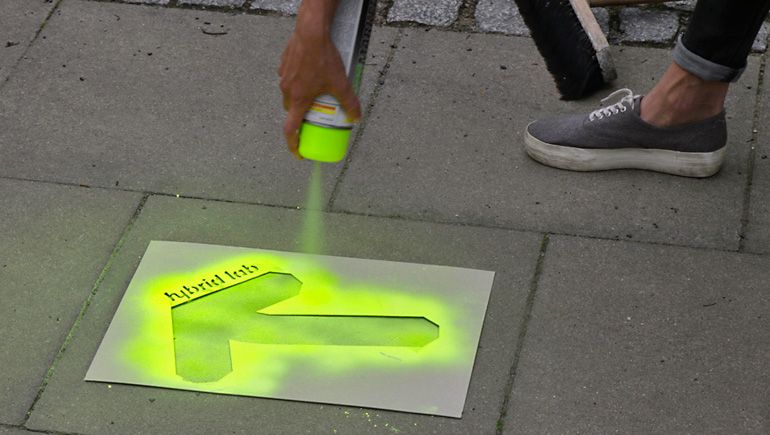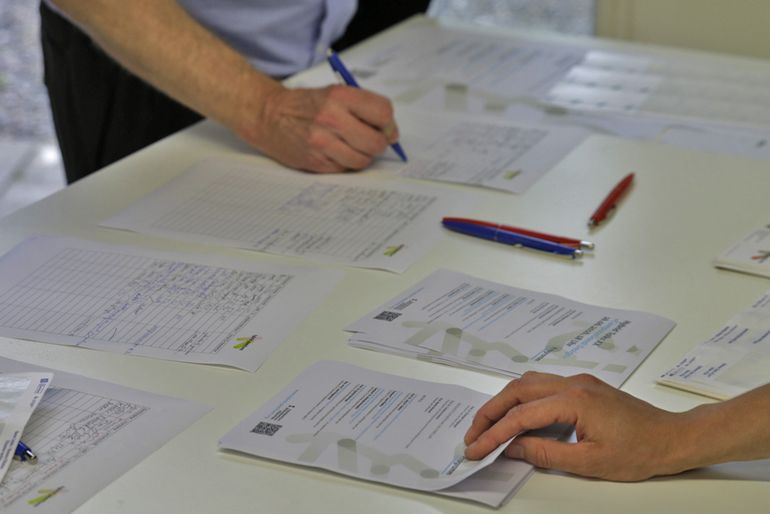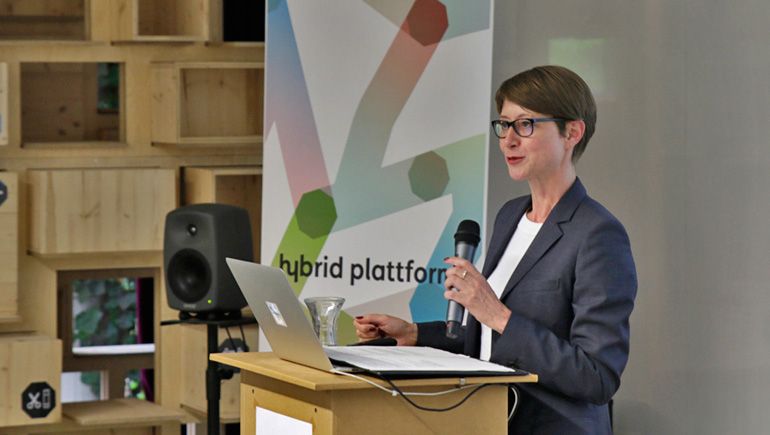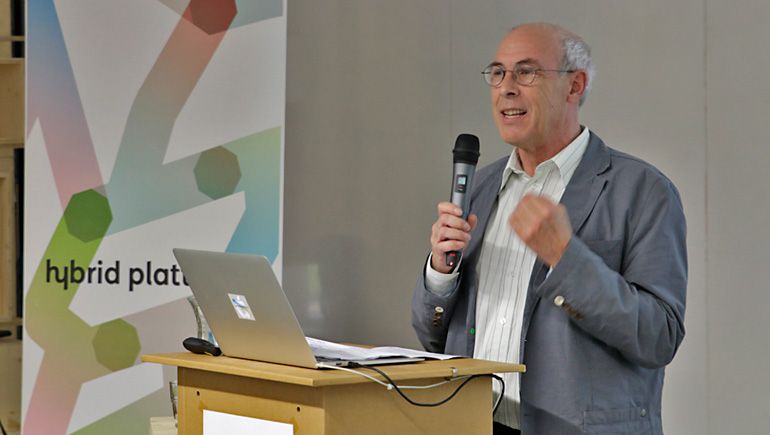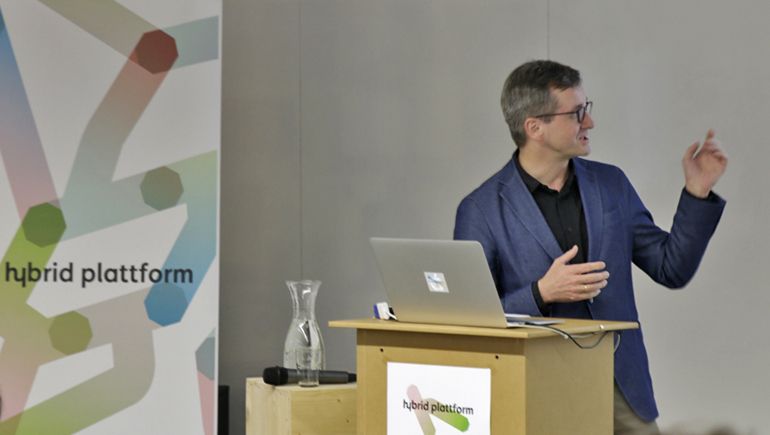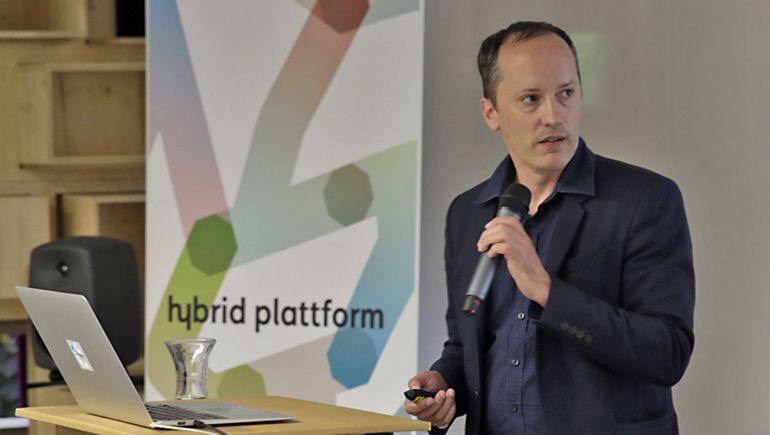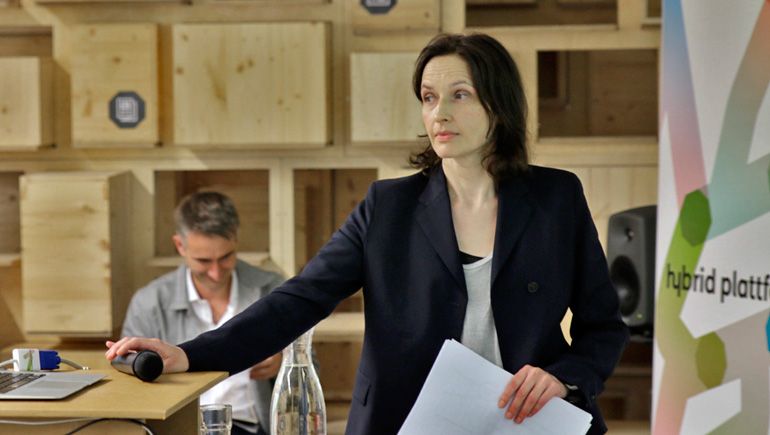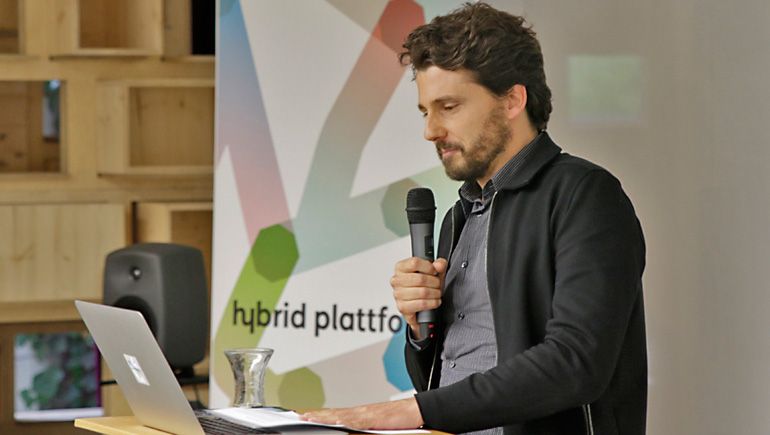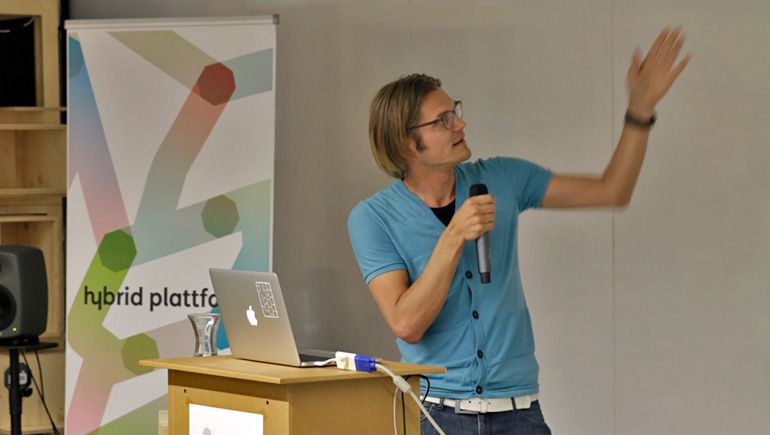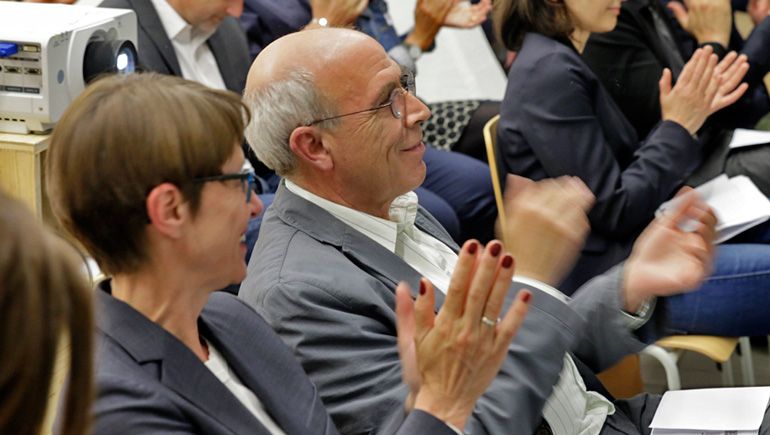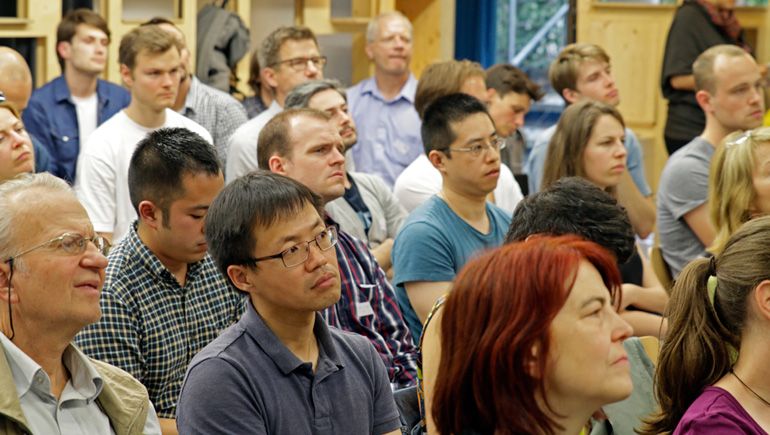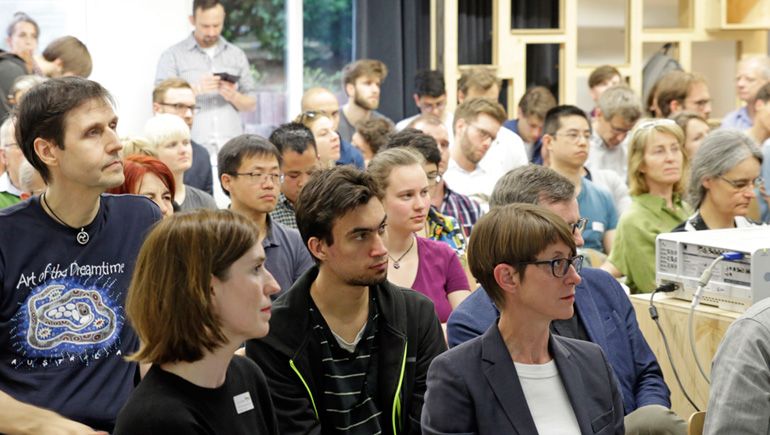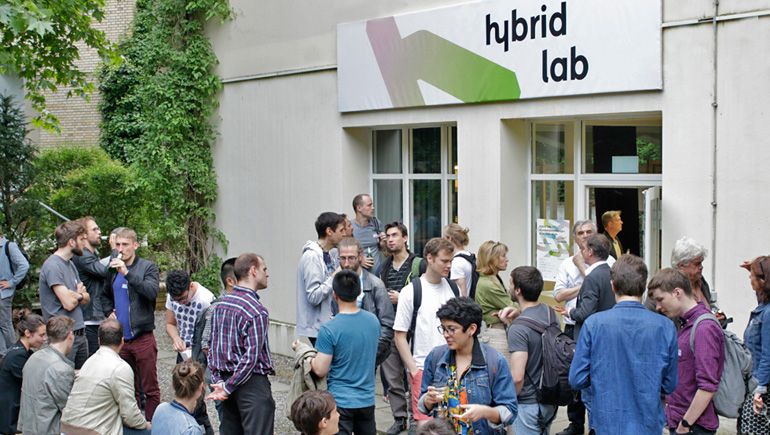On June 16th the inauguration of the new Hybrid Lab took place, staging the XXth hybrid talks on "<link en veranstaltungen-2>Computational Design" with a series of brilliant speakers and over 100 guests.
Prof. Dr. Christine Ahrend, Vicepresident of research, faculty appointment matters and promotion of young scientists of the TU Berlin, held the first of the welcoming speeches. She highlighted in particular the openness of the new lab with its big window facades, symbolizing basic ideas of the Hybrid Plattform: open-mindedness and far-sightedness required for interdisciplinary work between art and science. Expanding on this idea in his welcoming speech, the President of the UdK Berlin, Prof. Martin Rennert, adressed the importance of cooperation in a more global context. Current political and social problems only can be solved by overcoming boundaries, with new perspectives emerging by combining different cultures and ideas. The Hybrid Plattform provides a place for such encounters for both the UdK Berlin and the TU Berlin.
Computational Design – the main topic of the evening – is a practical example for the big potential of interdisciplinary approaches. Within this field science and art come together in manifold processes of creation and development, production and evaluation, as well as presentation and aesthetic expression. The XXth Hybrid Talks presented five snapshots from this ongoing development in the areas of architecture and media/ computational art at the TU Berlin and UdK Berlin. The evening was facilitated by Prof. Dr. Christoph Gengnagel, director of the Institute of Architecture and Urban Development at the UdK Berlin and leader of the Hybrid Plattform.
As the first speaker, Prof. Dr. Jörg H. Gleiter from the TU Berlin, outlined the historical background of computational design, linking its current developments within architecture to techniques from the Renaissance. By introducing scale drawings to architecture, 15th centuries architect Leon Battista Alberti gave new freedom to the practice of building. On the drawing board, architecture gained the abstract, theoretical dimension it lacked before, turning architecture into an intellectual discipline.
Prof. Sven Pfeiffer, currently guest professor at the TU Berlin, focused on the opportunities of digital technology within the architectural practice. Computational methods and processes allow for flexibilty, enabling architects to experiment in the virtual domain and thus increasing their creative freedom as designers. To examplify these developments, Sven Pfeiffer presented projects that consider architecture as an interdependent part of climatic systems. By using digitally simulated flow models of wind and other natural forces, architectural designs are adjusted to local climatic conditions.
In her talk "'Building information modeling' and the Mesh of Changes Within and Without Technology", Prof. Dr. Nathalie Bredella, currently guest professor at the UdK Berlin, looked at the deconstructivist architect Frank Gehry. Nathalie Bredella described his work focusing on its media aspects and the influence his design tools had on modern architecture. Gehry's complex, curved forms and the unusual materials used required unconventional, digital tools within the design process. These were developed by his office and challenged several architectural conventions in the early 1990s, making Gehry an innovator in computational design.
In his talk "Figuration vs Configuration, please, mind the gap!", Prof. Dr. Ignacio Borrego of the TU Berlin reflected upon the effects of digital media's use in the architectural practice in the context of academic teaching. The way a product is developed affects the product itself and, possibly even more importantly, the way teacher and students communicate about the results of their work. In the past studies on architectural design happened through direct experience on the construction site, a clearly limited space. He argued that nowadays, the archictural student is confronted with an unknown, vastly complex reality, where direct experience is hard to gain. Digital communication has the potential to close the gap between theory and practice, since the virtual simulation offers possibilities to experiment with designs. In this sense, configuration can assist figuration.
The final presentation was given by digital media Prof. Jussi Ängeslevä from the UdK Berlin, who illustrated the potential of computational design in the artistic pratice through an example. For the art installation "River is...", Ängeslevä created a complex surface designed to resemble a flowing river, frozen in time. Rays of light from a torch are reflected and casted upon a wall, forming pictures of Korean words. The production of this surface was made possible by ray tracing, a digital procedure that models the complicated spreading of light within a room. Again the design process was computational.
The XXth Hybrid Talks concluded with lively discussions in an informal atmosphere.
– Marten
Did you miss the 20th Hybrid Talks? Listen to the whole event here.

